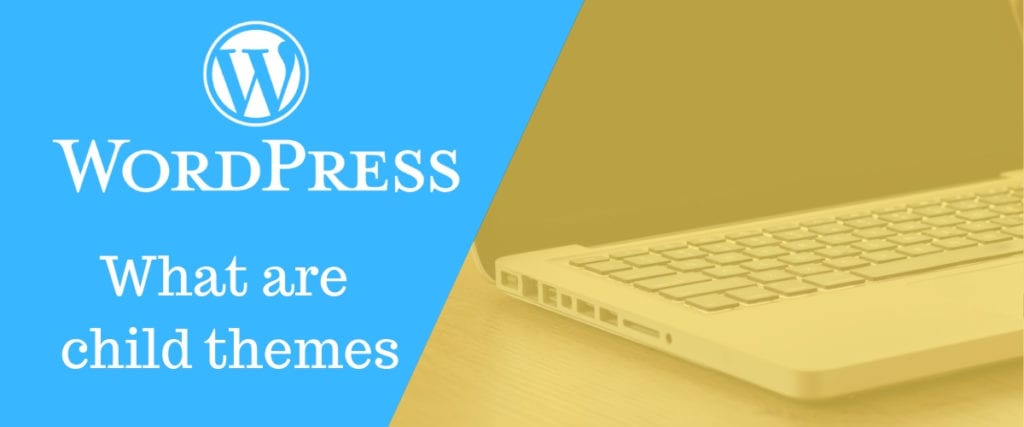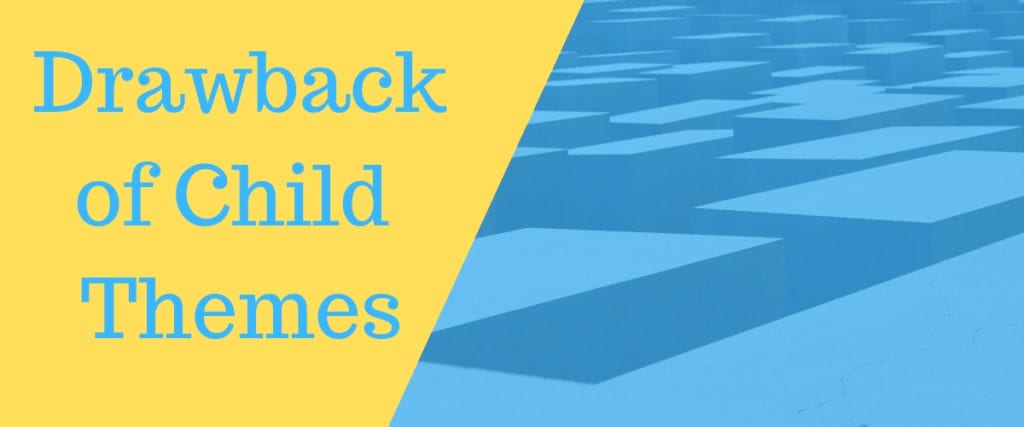When you are just getting started with WordPress you will often hear about a child theme. In this article we will look at what a child theme is and why you might or might not need it.
What is a WordPress Child Theme? A WordPress child theme is a theme that is attached to parent theme so you can change an existing theme and keep those changes through updates. Child themes use similar files as the parent to change things like page structure or even design elements inside a theme. Every time you update a theme any changes to that theme are normally overridden which causes the need for a child theme.
Let’s look at why you might need a child theme and how to install a child theme.
What are child themes
The WordPress community created child themes as a way to change an existing theme but allow you to upgrade. If you open your current theme and change themes files then on the next update those changed files will be replaced by the new updated ones.
This create a challenge for people who needed to change an existing theme without losing security. The child theme was born from a necessity of the community.
I think child themes became popular at about the time that a popular framework named Genesis was being developed. It was a theme that only grew in excitement when it first came out over the ability to customize it beyond what it was meant for.
This pushed developers to change the existing theme it well documented which while also being able to update when new security patches or existing changes. The child theme solved both issues without a problem and since has died down and also still used but not as much as before.
When you should use a child theme
Before the birth of page builders and other enhancements to WordPress it was very hard to change a theme without breaking the theme. Now more recent updates have pushed them the limit of what can be done with WordPress. You no longer need a child theme to edit a theme, page builders have pushed WordPress to where they can edit whole themes with no issue.
These advances have made changing a theme less and less desirable for someone who isn’t making huge changes. Originally it was complex for someone to edit child themes and install theme on a WordPress site. A less tech savvy person would have even more trouble understanding where it is located.
As a good rule of thumb, I only use child themes if I need to edit the existing theme or functions of a theme. If you don’t know what any of this means then it is unlikely that you need to use a child theme but if you are still interested in learning about how to install a child them then read on below.
Installing a child theme on your WordPress Site
Installing a child theme has become much more simple all because of plugins. There are now a handful of plugins that will install a child theme for your without very much input from the user. Here is a list of some of those plugins:

child theme configurator: This plugin is a popular one with over 200,000+ active installs. I have used it and I think it’s simple for someone new to WordPress or web design.
One-click Child theme: This is another easy plugin which installs the child theme for someone by using the simplest options and limiting what it does. I’ve tried this before in the past and I prefer others but this gets the job done.
Child Theme Wizard: This is a good plugin that gives you more options than others and it works pretty well.
So as you can see from up above these plugins are not as popular as something like page builders but gives you enough options you can change to a theme with no need to use a page builder or other options to do it.
Once you have installed the child theme, it will show up under the theme section of your WordPress install. You should see the default inputs that where used above and it will usually use the same image from the parent letting you know that it is a child theme.
Other methods of editing a theme directly
If you are trying to edit styling or the code of the theme then there are some simple methods to use which don‘t require installing anything extra.
Inside the customizer of most themes you will find a snippet called additional CSS. This area will allow you to use code copied from the theme CSS file and change that code without losing it during an update. This is just the CSS code and will not affect things like functions which will still require the use of a child theme.
It’s important to note that a good theme is critical to make sure you can use a child theme effectively.
Drawback of Child Themes

The biggest drawback to a child theme is a developer that no longer supports the parent theme you are using. In the world of WordPress it is not uncommon for a developer to lose interest in a theme and that theme to lose favor. While many themes have a great track record, your child them still needs a parent theme.
Another problem you can run into is if the developers decides to changes in some CSS naming conventions inside the theme. I have seen this happen many times with big themes such a Divi and the effects can be very drawn out. Unless you are looking at changelogs and keep tracking it’s easy to update and then your theme breaks to new CSS code.
Therefore people will often stress the importance of making sure you pick a decent theme to support your child theme.
Themes with a proven track record
OceansWP: OceansWP has been around for a little while and while the theme isn’t as old as something like Genesis they have developed a great reputation of supporting the WordPress community.
Astra: The team behind Astra is Brainforce and they continue to make alliances with all the page builders, I would not expect this theme to go away soon.
GeneratePress: This is another theme that was created using the Genesis framework. The team behind GeneratePress does a great job of keeping the theme updated and making it secure.
Related Questions
How do I use a child theme in WordPress? A Child theme works just like a regular theme both the parent or original needs to be installed and then you would install the child by clicking the add theme button. Once the child is added it will inherit its design and functions from the original theme.
Do I need a child theme? If you are making changes only to CSS, then you do not need a child theme. If you want to change a themes function, then you will need a child theme.
How do I delete a child theme? You would delete it like any other theme you want to great rid of. Click the image of the child theme and underneath the theme section there will be something that says delete. You can also uninstall it using FTP but the process above is much quicker.
Conclusion
I hope this article has helped you better understand what child themes are and how they work. If you have any questions, reach out to me and contact me about any help. As always, if you want more content involving WordPress articles or there is something special you want to see let us know.





